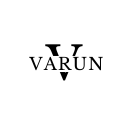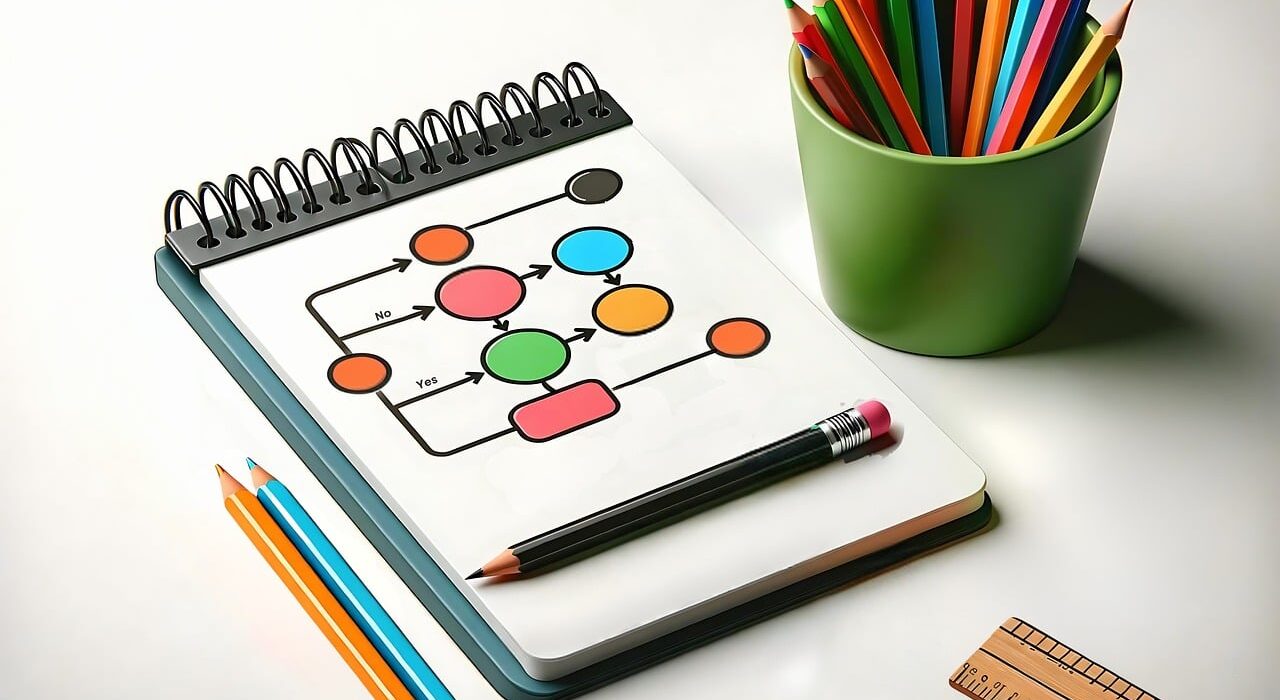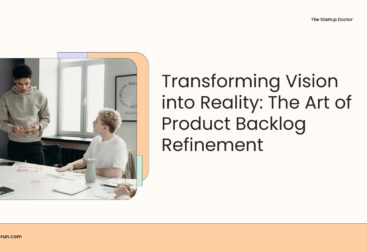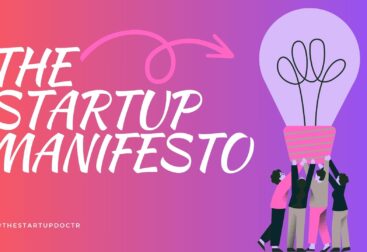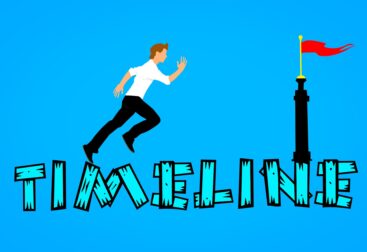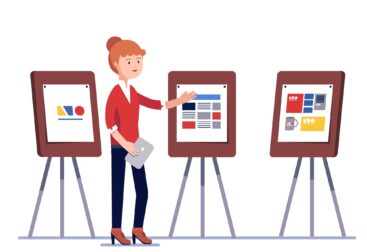In today’s fast-paced digital landscape, product development is not just about building products; it’s about building the right products. Agile methodologies have revolutionized how teams develop products, enabling faster iterations and a closer alignment with customer needs. However, a crucial component often overlooked in this iterative process is continuous discovery. The practice of continuous discovery ensures that teams remain deeply connected to customer problems, adapting and refining their products in response to real-world feedback even after the initial launch.
In this article, we’ll explore how continuous discovery can be seamlessly integrated into Agile product development. We’ll dive into methodologies, frameworks, and real-world examples to illustrate how this integration can lead to more successful and user-centered products.
Understanding Continuous Discovery and Agile Development
Agile Development is a well-known approach that emphasizes iterative development, where requirements and solutions evolve through collaboration between cross-functional teams. Agile promotes flexibility, customer involvement, and rapid iterations, enabling teams to respond to change quickly.
Continuous Discovery, on the other hand, is a product management practice that involves ongoing research to uncover user needs, validate ideas, and test assumptions. It’s about maintaining a persistent connection with users and learning from their feedback throughout the product lifecycle, not just during the initial research phase.
When we talk about integrating continuous discovery into Agile, we’re essentially discussing how to embed a continuous feedback loop into an iterative development process, ensuring that teams remain aligned with user needs as they evolve.
The Importance of Continuous Discovery in Agile
Continuous discovery offers several key benefits in the context of Agile development:
- Alignment with User Needs: Agile teams can quickly build and release features, but without continuous discovery, they risk building the wrong features. Discovery ensures that what the team builds is truly what users need.
- Reduction of Risk: Continuous discovery helps identify potential pitfalls early. By consistently validating ideas with users, teams can pivot before investing too much time or resources in the wrong direction.
- Increased Innovation: Regular interaction with users often uncovers unmet needs or new opportunities, driving innovation and competitive advantage.
- Better Decision Making: Continuous discovery provides a steady stream of insights, enabling product teams to make more informed decisions based on actual user behavior and feedback.
Integrating Continuous Discovery into Agile Workflows
To effectively integrate continuous discovery into Agile, it’s important to weave it into every stage of the Agile workflow. Let’s explore how this can be done:
1. Incorporating Discovery in Sprint Planning
Sprint planning is where Agile teams decide what to build in the upcoming sprint. Traditionally, this is based on a prioritized backlog of features or user stories. To integrate continuous discovery, teams should also bring user insights and discovery findings into these discussions.
Example: Consider a SaaS product team that has been continuously engaging with users through interviews and usability testing. During sprint planning, the product manager shares recent insights from these sessions. One key finding is that users struggle with the complexity of a specific feature. The team decides to prioritize simplifying this feature in the upcoming sprint, directly aligning their work with user feedback.
Method: One approach to ensure that discovery is included in sprint planning is to adopt the “dual-track Agile” framework, where discovery and delivery happen in parallel tracks. In this framework, while some team members work on delivering the current sprint’s commitments, others focus on discovery activities that will inform future sprints.
2. Using Continuous Discovery to Shape Backlogs
In Agile, the product backlog is a dynamic list of items that the team intends to build. It’s typically prioritized based on business value and technical considerations. By integrating continuous discovery, product teams can ensure that the backlog is also prioritized based on user needs and validated ideas.
Example: Imagine a mobile app development team that regularly conducts user interviews to explore new features. They discover that users are increasingly frustrated with the app’s onboarding process. This insight leads to the creation of several new backlog items focused on improving the onboarding experience. As these items are based on real user pain points, they naturally rise in priority.
Method: To keep the backlog continuously informed by discovery, teams can implement a regular cadence of backlog refinement sessions where recent discovery findings are reviewed, and backlog items are adjusted accordingly. Techniques like story mapping can also help in visualizing how user needs evolve over time and how the backlog should adapt.
3. Embedding Discovery into Daily Standups and Retrospectives
Daily standups in Agile are meant to keep the team aligned on progress and any blockers. Including a quick update on ongoing discovery activities can help ensure that everyone remains aware of new insights or changes in user needs that might impact their work.
Example: A product team is in the middle of a sprint to improve an e-commerce platform’s search functionality. During the daily standup, the product manager shares feedback from recent user testing that suggests the new search filters are confusing users. This insight prompts the team to discuss a potential change in approach, ensuring they remain aligned with user expectations.
Retrospectives, typically held at the end of a sprint, are an opportunity for the team to reflect on what went well and what could be improved. Including a discussion on the effectiveness of discovery activities can help teams identify ways to better integrate user feedback into future sprints.
Method: Encourage team members to share any new user insights during standups, and dedicate a portion of retrospectives to reviewing the impact of discovery on the sprint’s outcomes. This practice can help create a culture where discovery is seen as a continuous, integral part of the development process.
4. Continuous Discovery through User Testing and Feedback Loops
User testing and feedback loops are essential components of continuous discovery. In Agile, these activities can be integrated into the iterative development process to ensure that each iteration is informed by real user feedback.
Example: A fintech startup is iteratively developing a new budgeting feature for their app. After each sprint, they conduct usability tests with a small group of users to gather feedback on the latest iteration. This feedback is then used to refine the feature in the next sprint, ensuring that the final product is closely aligned with user needs.
Method: Implement a regular schedule for usability testing, user interviews, or A/B testing that aligns with the sprint cycle. For example, you could conduct user tests at the end of each sprint, allowing you to validate the sprint’s outcomes and gather insights for the next one. Tools like UserTesting, Hotjar, or even simple surveys can facilitate this process.
5. Leveraging Continuous Discovery to Foster Cross-Functional Collaboration
Agile emphasizes cross-functional collaboration, with teams often including members from product management, design, development, and marketing. Continuous discovery can enhance this collaboration by providing a common ground—user insights—that all team members can rally around.
Example: A cross-functional team at a health tech company is working on improving a patient management system. Continuous discovery has revealed that healthcare providers are struggling with data entry tasks, leading to frustration and errors. This insight is shared across the team, prompting designers to simplify the UI, developers to enhance data validation features, and the marketing team to adjust messaging around the product’s ease of use.
Method: Foster a culture where discovery insights are regularly shared across the team. Tools like Miro or Confluence can be used to create shared discovery boards where insights, user journey maps, and personas are updated in real-time and accessible to everyone.
Frameworks and Models Supporting Continuous Discovery in Agile
To effectively integrate continuous discovery into Agile, it can be helpful to adopt specific frameworks or models that provide structure to these efforts. Here are a few that can be particularly useful:
1. Dual-Track Agile
As mentioned earlier, Dual-Track Agile is a framework where discovery and delivery are treated as parallel, intertwined tracks. The discovery track focuses on understanding user needs, validating ideas, and generating insights, while the delivery track focuses on building and shipping features.
Implementation: In practice, this means that while some team members are busy coding and testing features for the current sprint, others are conducting user interviews, running experiments, or analyzing user behavior to inform the next sprint. The two tracks regularly intersect, with insights from discovery informing delivery and feedback from delivery informing further discovery.
Benefit: This framework ensures that discovery is not a one-time activity but a continuous process that runs alongside development, providing a steady stream of validated insights to guide the team’s efforts.
2. Opportunity Solution Tree (OST)
The Opportunity Solution Tree (OST), developed by Teresa Torres, is a visual framework that helps teams map out opportunities and solutions based on user needs. It starts with a clear product outcome at the top, followed by branches that represent opportunities (user needs or problems) and potential solutions.
Implementation: Regularly update the OST based on continuous discovery activities. For example, after each round of user interviews, you might identify new opportunities or refine existing ones. These updates can then be used to guide sprint planning and backlog prioritization.
Benefit: OST helps teams maintain a clear focus on outcomes while systematically exploring and validating opportunities and solutions, ensuring that all development work is aligned with user needs.
3. Jobs to Be Done (JTBD)
The Jobs to Be Done (JTBD) framework focuses on understanding the underlying “job” that users are trying to accomplish with your product. By focusing on the job rather than just the features, teams can better identify user needs and design solutions that truly meet those needs.
Implementation: Integrate JTBD interviews into your continuous discovery activities to uncover deeper user motivations. Use these insights to inform the development of features that more effectively address the core jobs your users are trying to accomplish.
Benefit: JTBD helps teams avoid the trap of feature-centric thinking and instead focus on delivering real value to users by solving their core problems.
Overcoming Challenges in Integrating Continuous Discovery
Integrating continuous discovery into Agile is not
without its challenges. Here are some common obstacles and strategies to overcome them:
1. Time Constraints
Agile teams often face tight deadlines and may feel that there’s no time for discovery activities. However, skipping discovery can lead to wasted effort on building the wrong features.
Solution: Emphasize the long-term benefits of discovery, such as reduced rework and better product-market fit. Start small by dedicating just a few hours each sprint to discovery activities, and gradually increase this as the team sees the value.
2. Lack of User Access
Teams may struggle to access users regularly for interviews or testing, especially in B2B contexts where users are busy professionals.
Solution: Build a user panel of willing participants who can be contacted for quick feedback sessions. Alternatively, use tools like customer support tickets, sales feedback, or social media to gather indirect user insights when direct access is limited.
3. Cultural Resistance
Some teams may resist the shift to continuous discovery, especially if they are used to a more delivery-focused mindset.
Solution: Educate the team on the benefits of continuous discovery and how it complements Agile. Highlight success stories from other teams or companies that have successfully integrated discovery into their workflows.
Real-World Example: Integrating Continuous Discovery at Spotify
Spotify is a great example of a company that has effectively integrated continuous discovery into its Agile processes. The music streaming giant operates with small, cross-functional teams known as “squads.” Each squad is empowered to discover, develop, and deliver features autonomously.
Spotify’s approach to continuous discovery involves regular user testing, data analysis, and A/B testing, all of which feed into the development process. For example, when developing their personalized playlists feature, Spotify’s teams didn’t just rely on initial research. They continuously tested different algorithms, playlist designs, and user flows, gathering feedback from users at every step. This iterative process ensured that the final product was not only technically robust but also closely aligned with user preferences.
This ongoing commitment to discovery has been crucial in helping Spotify maintain its competitive edge in a crowded market. By staying closely connected to users’ needs and preferences, Spotify continuously refines and improves its product, leading to higher user satisfaction and loyalty.
Integrating continuous discovery into Agile product development is not a one-time effort but an ongoing journey. It requires a shift in mindset, where discovery is seen as a continuous process that runs in parallel with delivery. By embedding discovery into every stage of the Agile workflow—sprint planning, backlog refinement, daily standups, retrospectives, and more—teams can ensure that they are always building products that truly meet user needs.
The benefits of this integration are clear: better alignment with user needs, reduced risk, increased innovation, and more informed decision-making. While there may be challenges along the way, the rewards far outweigh the effort required.
In the end, the goal of Agile is to build the right product, and continuous discovery is the key to ensuring that what you build is not only right at launch but continues to be right as your users and the market evolve. By committing to this practice, product teams can create products that not only succeed in the short term but thrive in the long term, adapting to changing needs and delivering ongoing value to users.
